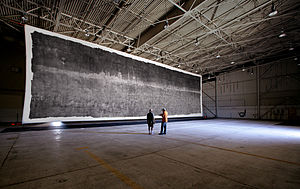Portal:Visual arts/Selected picture
Guidelines
Selecting an image
There is no formal nomination process for adding a new image to the selected images collection. Before adding an image, keep the following in mind:
- Images must be free, either public domain or freely licensed. Fair use images are not permitted outside of the article namespace (see Fair use policy criteria #9).
- Images should be of high quality.
- Images should be a useful means to point to Wikipedia content. Do not add an image that is not in use somewhere within a Wikipedia entry. To determine this, check the bottom of the image page itself, where you will find a list of File Links.
Suggest an image
Feel free to leave any suggestions for a selected image in this section. Comments are helpful.
Nominations:
- Can I suggest the Mural of Cincinnati created by Saul Steinberg? This 75-foot mural is on display at the Cincinnati Art Museum, there are images of the conservators working on it.
Adding an image
If you are feeling ambitious, the instructions for adding an entry to the selected image collection are outlined below. Any questions or disagreements about the appropriateness of an entry should be discussed on the talk page.
- Go to {{Selected picture}} and grab the layout template.
- Go to the next available subpage (Portal:Visual arts/Selected image/n+1 - where n is the number of the topmost image on this page, as it will be throughout these instructions).
- Paste the layout template into the subpage and fill in the appropriate fields.
- Go to the main portal page edit screen and find the following text. Look closely as there are other similar components on the page.
{{Random portal component|max=n|seed=29|header=''selected image''|
footer=More selected images...|subpage=Selected image}}
- Change the max attribute from n to n+1. Save and you're done! Thanks for the contribution.
Selected picture 1
Portal:Visual arts/Selected picture/1

Selected picture 2
Portal:Visual arts/Selected picture/2
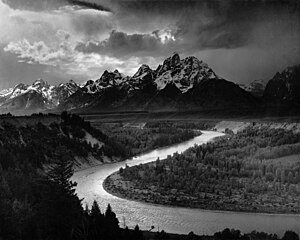
Selected picture 3
Portal:Visual arts/Selected picture/3

Selected picture 4
Portal:Visual arts/Selected picture/4
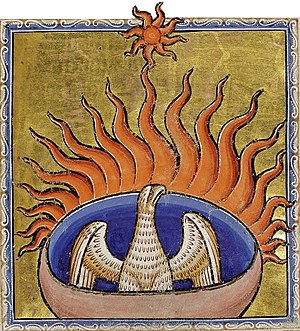
Selected picture 5
Portal:Visual arts/Selected picture/5
Selected picture 6
Portal:Visual arts/Selected picture/6

Selected picture 7
Portal:Visual arts/Selected picture/7

Selected picture 8
Portal:Visual arts/Selected picture/8
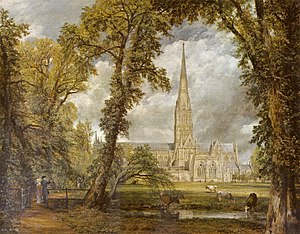
Selected picture 9
Portal:Visual arts/Selected picture/9

Selected picture 10
Portal:Visual arts/Selected picture/10

Selected picture 11
Portal:Visual arts/Selected picture/11

Selected picture 12
Portal:Visual arts/Selected picture/12
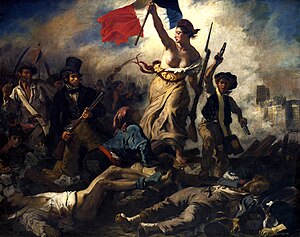
Selected picture 13
Portal:Visual arts/Selected picture/13
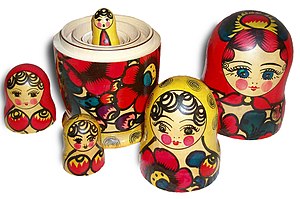
Selected picture 14
Portal:Visual arts/Selected picture/14

Selected picture 15
Portal:Visual arts/Selected picture/15
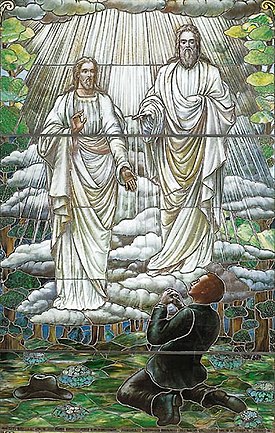
Selected picture 16
Portal:Visual arts/Selected picture/16
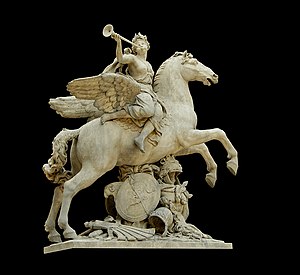
Selected picture 17
Portal:Visual arts/Selected picture/17

Selected picture 18
Portal:Visual arts/Selected picture/18

Selected picture 19
Selected picture 20
Portal:Visual arts/Selected picture/20
Selected picture 21
Portal:Visual arts/Selected picture/21
Selected picture 22
Portal:Visual arts/Selected picture/22

Selected picture 23
Portal:Visual arts/Selected picture/23
Selected picture 24
Selected picture 25
Portal:Visual arts/Selected picture/25





